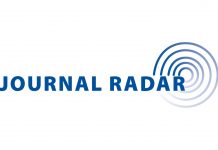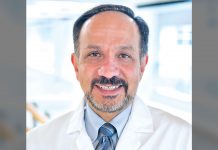Posted: February 2017
By Lori Alexander, MTPW, ELS, MWC
The closing plenary session at IASLC WCLC 2016 featured several highly regarded oncologists who have devoted the greater part of their careers to thoracic oncology. These “giants” reflected on their work and the changes they have seen in the key areas of chemotherapy, thoracic surgery, radiation therapy, pathology, EGFR inhibitors, and translational research.
Chemotherapy
Advances in cytotoxic chemotherapy agents have lagged behind advances in other cancer treatments, said Thierry Le Chevalier, MD, of Gustave Roussy Hospital and Marie Lannelongue Hospital, Paris Sud, France. He noted that few cytotoxic drugs have been approved for lung cancer since 2000 and that there has been a lack of progress in the treatment of small cell lung cancer. “We have used the same disappointing doublet since the early 80s,” he said. In addition, shifts in the population of patients with non-small cell lung cancer (NSCLC) are also changing the role of chemotherapy, with an increasing number of nonsmokers, women, and patients with mutation-driven tumors.
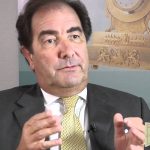
Although chemotherapy remains the systemic standard of care for most people with NSCLC, it is usually given with palliative intent. A subset of patients can be cured with chemotherapy, but it is mostly when chemotherapy is used in combination with surgery or radiation therapy. Dr. Le Chevalier described the findings of several of his studies with colleagues, which have shown that adjuvant cisplatin- based chemotherapy significantly improves outcomes for patients who had complete resection of NSCLC, with the greatest benefit found for patients with stage II or III disease.
Dr. Le Chevalier continues his research in assessing biomarkers to help better define patients who are more likely to benefit from postoperative chemotherapy. His research earned him the IASLC Paul A. Bunn, Jr. Scientific Award in 2005.
Surgery
In reflecting on surgical milestones in cardiothoracic surgery, Peter Goldstraw, MD, FRCS, of Royal Brompton Hospital, London, UK, echoed Dr. Le Chevalier’s comments about the shifting population of patients with lung cancer.
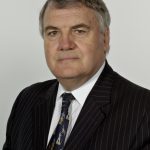
“In the 1970s it was unusual to operate on anyone over the age of 70, few patients were female, and lung cancer was almost totally a smokers’ disease,” said Dr. Goldstraw. “Now the eighth decade of life is the commonest decade of presentation, lung cancer is almost as frequent in females as in males, and 15% of cases are in lifelong nonsmokers.”
Dr. Goldstraw also noted that resection rates have improved and patient survival is longer because of the large number of specialist surgeons. Surgeons are now safely operating on older patients with more comorbidities and resections are less extensive, due to earlier diagnosis, improved preoperative assessments, and changes in the disease and its presentation. Surgical approaches, including conventional thoracotomy, are less invasive now, he added, and operative mortality is lower. Survival also improved as adjuvant therapy became the standard of care for resected NSCLC, as Dr. Le Chevalier noted.
Dr. Goldstraw is Emeritus Professor of Thoracic Surgery at the National Heart and Lung Institute, Imperial College, UK, and has received numerous awards in recognition of his contributions in cardiothoracic surgery. He received the 2007 IASLC Merit Award and served as IASLC President in 2011–2013. He is the Executive Editor of the IASLC Staging Manual in Thoracic Oncology, published in 2009, the first-ever lung cancer-specific staging publication.
Radiation Therapy
Radiation oncologist David Ball, MD, FRANZCR, of Peter MacCallum Cancer Centre, Royal Melbourne Hospital, Melbourne, Australia, highlighted improvements in radiation therapy for lung cancer. He began by delineating the dismal prognosis for lung cancer in the early 1970s, presenting the findings from a study from that period showing that radiation therapy alone, chemotherapy alone, and radiation therapy plus chemotherapy were no more effective, with respect to survival duration, than a so-called wait-and-see approach.

“Survival has improved tenfold compared with 40 years ago. Yet the active agent today is exactly the same as it was then with the same mechanism of action: megavoltage photons,” he said.
Key contributors to this improvement include the digital revolution, starting with computed tomography (CT) being used for 3-dimensional delineation of the target and organs at risk. It also enables accurate dose computation by correcting for tissue inhomogeneities. The addition of chemotherapy to radiation therapy has further improved outcomes, with shorter radiation therapy regimens now preferable to longer regimens. Another development is the increased use of hypofractionation due to the advent of stereotactic ablative radiotherapy.
Dr. Ball received the 2011 IASLC Merit Award and currently serves as a member of the IASLC TNM Staging Committee. He also chairs the Australian Lung Cancer Guidelines Working Party and has been Editor-in-Chief of the Journal of Medical Imaging and Radiation Oncology since 2007.
Pathology
The establishment of lung cancer cell lines revolutionized the field of thoracic pathology and deepened our understanding of lung cancer biology, said Adi F. Gazdar, MD, of University of Texas Southwestern Medical Center, Dallas, US. In the case of NSCLC, discoveries such as EGFR activating mutations and EGFR T790M mutation have resulted in targeted treatment for these mutations. Identification of such mutations has also transformed the classification of tumors, including the recognition that a tumor usually consists of mixtures of subtypes. Dr. Gazdar discussed an expression signature he and his colleagues have developed that can be used as an adjunct for histologic classification of NSCLC.
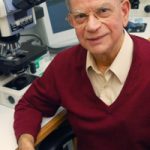
Dr. Gazdar also provided perspective on the evolving roles of pathologists following the advent of precision medicine. “Precision medicine changed the diagnosis, understanding, and management of lung cancer and enabled pathologists to become integral members of the multidisciplinary treatment team,” he said.
As head of the Tumor Cell Biology Section at the National Cancer Institute, Dr. Gazdar collected, catalogued, and analyzed more than 2,200 human cancer specimens, mostly lung cancers and lymphomas. IASLC honored him with the Mary J. Matthews Pathology/ Translational Research Award in 2003.
Targeted Therapies
Frances A. Shepherd, MD, of Princess Margaret Cancer Centre, University of Toronto, Canada, is widely recognized for her involvement in the development of several large international randomized trials of novel agents directed against EGFR and other molecular targets. In her presentation, she compared the molecular landscape at the turn of the last century to the current situation, noting the progress made along the way and some of the lessons learned. For example, she commented that only in the last 10 years have we have become fully aware that EGFR inhibitors cause G1 arrest and consequently reduce the effectiveness of chemotherapy or that patient selection is important for treatment with EGFR inhibitors.

Dr. Shepherd emphasized the importance of understanding the difference between quantitative and qualitative interactions when assessing treatment response. To illustrate her point, she used the SATURN maintenance study of erlotinib in patients with EGFR wildtype disease as an example of a quantitative interaction; even though erlotinib resulted in a statistically significant overall survival benefit, it was not clinically relevant because the benefit was so small. She underscored the need to evaluate the clinically relevant benefit and the statistical benefit together when assessing a treatment.
Dr. Shepherd concluded by talking about EGFR inhibitor resistance, including some of the exciting outcomes from studies of newer agents, such as osimertinib, that combat this problem, as well as the latest fourth-generation drugs and the need for broad molecular profiling.
Dr. Shepherd received the IASLC Paul A. Bunn, Jr. Scientific Award in 2007 and served as IASLC President in 2003–2005.



